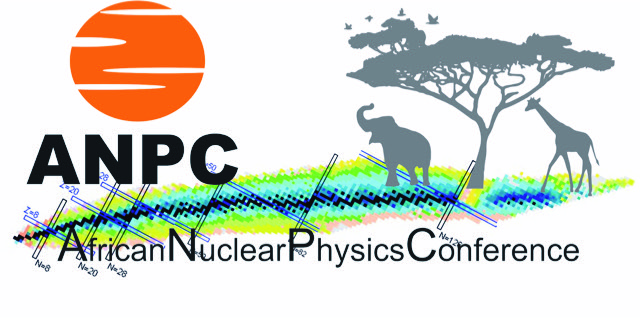Speaker
Description
Neutron capture reactions are responsible for the synthesis of almost all of the elements heavier than iron: the slow (s) process proceeds on isotopes near stability; the rapid (r) process produces isotopes with short half-lives that subsequently decay towards stability. In hot r-process scenarios, final abundance patterns are relatively insensitive to neutron capture rates on waiting point isotopes. However, unknown neutron capture rates on specific isotopes can have significant impact [1] on final abundance patterns in freeze-out from hot scenarios, as well as colder scenarios when (n,gamma)-(gamma,n) equilibrium is not attained. To inform neutron capture rates important in reproducing observed r-process abundances requires a validated surrogate approach since direct measurements, even with beams of short-lived isotopes, are not feasible. The (d,p gamma) reaction has recently been demonstrated [2] to be a valid surrogate for neutron capture. Potel and coworkers [3] have shown how the inelastic breakup of the deuteron provides a neutron that can be captured. This reaction model enables calculations of the distribution of transferred angular momenta as a function of effective neutron energy, a critical ingredient in any surrogate approach. The surrogate reaction analysis approach developed by Escher and colleagues [4] was adopted in Ref. [2]. The observed gamma-decay probabilities for specific discrete transitions are fit with the Potel-model for compound nucleus formation; level density and gamma-ray strength function parameters are constrained by a Bayesian analysis. Optical model calculations of the entry neutron channel coupled to the deduced gamma-decay probability are used to calculate the neutron capture cross section as a function of neutron energy. To constrain neutron-capture cross sections on unstable nuclei, the GODDESS detector system [5] - that couples a Gamma-ray detector array to the Oak Ridge Rutgers University Barrel Array of position-sensitive silicon strip detectors - would be used to measure (d,p) reaction protons as a function of effective neutron energy and in coincidence with discrete gamma-ray transitions. The surrogate gamma-ray emission probabilities would be extracted and fit with the Escher-Potel framework to provide the gamma-decay probabilities as a function of entry spin-parity needed for calculations of neutron capture cross sections. The present contribution would summarize the (d,p gamma) surrogate neutron capture reaction validation, the GODDESS detector system, and the status of (d,p gamma) reaction measurements with stable and radioactive ion beams.
Work supported in part by U.S. Department of Energy National Nuclear Security Administration and Office of Science and the National Science Foundation. We thank the GODDESS collaboration for invaluable contributions.
[1] M.R. Mumpower et al., Prog. Part. Nucl. Phys. 86, 86 (2016).
[2] A. Ratkiewicz et al., Phys. Rev. Lett. 122, 052502 (2019).
[3] G. Potel, F.M. Nunes, and I.J. Thompson, Phys. Rev. C 92, 034611 (2015).
[4] J.E. Escher et al., Phys. Rev. Lett. 121, 052501 (2018).
[5] S.D. Pain et al., Physics Procedia 90, 455 (2017).

